A Silly Article on Inflation
I still need to say 8 Hail Marys regarding my erroneous gold call, but in the meantime let’s have some fun with today’s CNBC article on inflation:
Federal Reserve Chairman Ben Bernanke must find a convincing way to explain why his central bank is in no hurry to raise interest rates even though the economy is stabilizing.
Does that strike anyone else as funny? The “must” in that sentence derives entirely from the the writer’s decision to go with the official Fed line, rather than those of some outside analysts. Compare to an analog from foreign policy: “Defense Secretary Donald Rumsfeld must find a convincing way to explain why U.S. forces are in no hurry to leave Iraq, even though the country has no WMDs.” Wouldn’t that have been a bit creepy, even for our press? Yet when the rules are bent for the Fed, it seems natural.
The Fed thinks that with unemployment at a 26-year peak and idle factory space at its highest on record, there is little near-term risk of prices overheating.
I owe my Hillsdale students a refund. I told them that economists learned there could be idle resources and large price inflation during the 1970s. My mistake.
Dino Kos, managing director at the research firm Portales Partners and a former top Fed official, said as long as the weak economy chills demand for credit, the free-flowing central bank cash poses no inflation threat.
See above. And my father taught me to never do business with a man named Dino.
Economists polled by Reuters see no chance that the Fed will raise its benchmark short-term interest rate from the current level near zero at this week’s meeting.
That said, the central bank will probably want to nurture hopes that the end of the recession is nearing.
Isn’t this disgusting? Seriously, reread that last sentence. What are we, girlfriends with low self-esteem? Lie to me, Ben! Tell me what I need to hear!
How quickly inflation builds depends on how quickly factories get back to full speed and the job market recovers, as well as whether the Fed can swiftly scale back lending programs and rate cuts.
Oh my gosh. Up till now, the CNBC writer thinks he has been negotiating the disagreement between the inflation hawks and the doves, but at this point in the article he just stated matter-of-factly that stagflation is impossible. Stop talking to Dino!
Krugman’s Waterloo
Even though he won’t act like it bothered him, Krugman has to know he got busted on the housing bubble quotes. Lilburne gives Krugman a li’l burn in this article:
And what about his strawman protests that he didn’t cause the housing bubble, much less the Enron scandal or Kennedy’s assassination? The man is willfully missing the point. What is damning about these quotes is not that he necessarily caused anything. What is devastating about them is that they expose the intellectual bankruptcy of his economic principles. Those who look up to him like the second coming of Adam Smith should realize that the neo-Keynesian principles that lead him to advocate aggressive interest-rate cuts and mammoth public spending now, are the very same principles that led him to advocate inducing a housing bubble then. He would himself affirm that his economic principles haven’t fundamentally changed since then. So the conclusions and policy prescriptions he infers from them are just as wildly wrong now as they were then.
My Most Extreme Gold Call: Hey, this crow’s not bad. Tastes like chicken.
I’m still in Florida recovering from my numerous trips. Tuesday morning I head back home (a 10-hour road trip). But an anonymous poster in a recent blog reminded me of this rash statement I made on January 23, 2009:
I don’t know why gold isn’t a lot higher, frankly. Part of it is the general drop in prices, I think, but that has surprised me. If gold doesn’t break $1,000 by summer then I don’t know what I’m talking about (at least in this arena).
Well, it’s officially summer, and gold hasn’t broken $1,000. I will do a postgame analysis once I’m settled back home, but for now let me just acknowledge that I didn’t know what I was talking about when I fired my mouth off in January.
Murphy vs. (Hernando) de Soto
In this month’s Ideas on Liberty, I take on Hernando de Soto’s WSJ op ed calling for stricter regulation of derivatives. An excerpt:
Regardless of what caused the crisis, government efforts to regulate derivatives will only lock in undesirable aspects of the current market and ensure that politically connected players reap artificial gains. It is absurd to ask politicians to promote financial integrity and sound accounting. They are the worst violators of these principles on the planet.
The Danger in Macroeconomic Tautologies
Tyler Cowen has been on fire lately. Check out this:
You’ll also read many commentators breaking national income into its components of C, I, G, and X-M (consumption, investment, government spending, and net exports) and asking where the growth will “come from” to “drive” the recovery. Of course national income accounting is an identity, so this cannot be a nonsensical question. Yet when the word “drive” is used, we are smuggling in a causal category. There is no guarantee that any particular decomposition of the national income identities the relevant causal components for what will “drive” recovery. How would it sound if you aggregated national income by zip code or county (or household) and asked where the boost to drive recovery would come from? Such an approach might not be on the right conceptual track.
That’s just beautiful. I have been chafing against this notion of “we need exports and more consumer spending to pull us out the recession” too, but Tyler’s ZIP code analogy is better than what I was trying to come up with.
Would North Korea Get Spanked by its Neighbor?
I cannot verify the claims of this FFF piece (HT2AWC), but the author, Carlton Meyer, is a former “U.S. Marine Corps officer who participated in military exercises in Korea.” He writes:
If North Korea attacked South Korea, the South Koreans would fight from mountainous and urban terrain which heavily favors defense, and complete air superiority would shoot up anything the North Koreans put on the road. [The North Koreans’] old tanks would not be able to advance through the mountainous border since the South Koreans have fortified, mined, and physically blocked all avenues. North Korean infantry and engineers could not clear road paths while under heavy artillery fire.
The North Korean military could gain a few thousand meters with human wave assaults into minefields and concrete fortifications. These attacks would bog down from heavy casualties and a lack of supply. Thousands of South Koreans would suffer casualties from North Korean artillery and commando attacks. Nevertheless, the North Korean army would not break through and its soldiers would soon starve.
A major North Korean objective would be to kill Americans. This is not difficult as American troops and their families are located at easily targeted bases that would be pummeled by North Korean SCUD missiles. If millions of Koreans start fighting, the 28,000 American troops in Korea would make no difference – only 4,000 are combat troops. Therefore, Americans who truly “support the troops” should demand that they be removed from Korea where they are just pawns who face death should a conflict erupt.
Austrians: Our Victory Is Complete
Discussing Krugman’s racy PIMCO quote, Scott Sumner says:
As everyone knows by now the once kooky and discredited Austrian business cycle model has now become conventional wisdom. Easy money creates bubbles, which inevitably cause depressions when they pop. It’s Greenspan’s fault. Paul and I are still not on board the Vienna express, but we are in an awkward position. (Thank God I didn’t have a blog in 2002!)
So the above is refreshingly funny and humble, but then Sumner goes on to say:
Here’s what I think is a defensible view of what Paul might have meant…The words are mine [Scott Sumner’s–RPM], not Paul’s:
“Business investment is tanking. A sharp fall in overall investment can often lead to a depression. The Fed should reduce interest rates…Because tech is so overbuilt, the lower interest rates may not be enough to bring business investment back to normal levels, instead other types of investment and consumer durables will have to pick up the slack. We can expect the housing sector to expand if rates are cut sharply….In the classical model we would then be moving along the investment PPF from less business investment to more housing investment, instead of moving far inside the PPF (as in the 1930s) with less overall investment as the economy tanks. Let’s hope bankers lend money to people who are likely to repay their loans, so that the bankers do not lose hundreds of billions of dollars, and their jobs. Monetary policy has no choice but to proceed on the assumption that we should stabilize the overall macroeconomy, and let the private sector decide where to allocate resources.”
Oh Scott Scott Scott. The issue about the PPF is tricky; as Garrison’s PowerPoint [.ppt] make clear, the problem of an unsustainable boom is that the low interest rates lead to greater (apparent) investment and consumption. That is physically impossible, which Garrison denotes by showing the economy moving beyond the (sustainable) PPF.
But the real problem is that part I put in bold. This is the primary weakness in all Keynesian (and Chicagoan) demand-management prescriptions. What exactly does the interest rate do in a market economy, according to these economists? Scott’s statement is like saying, “I’m not saying the government should stimulate the health care sector, I’m just saying it should subsidize stethoscopes.”
In case I’m being too cute: What I’m saying is that the interest rate is a price that allocates investment among projects of different length. It’s not merely a lever for “more investment or less?” To lower interest rates, in the hope of spurring total spending while ignoring the distortions among choice of investment projects, would be akin to raising taxes on labor and not realizing this would affect hair salons more than oil rigs.
What’s the Best Way to Short Treasurys?
Von Pepe sends these articles (here and here) on ways to short U.S. Treasurys.
If anyone has free time and a Bloomberg, can you give us some scenarios with current prices? E.g. I’m interesting in statements like: “If you buy this particular put option on 10-year Treasury futures, then on January 2, 2011, so long as yields haven’t fallen, you break even. And if the yield goes up by 50 bps, your return is 15%.”
In other words, don’t just tell me, “The market isn’t forecasting serious price inflation.” Tell me the specific wagers that are available, given current prices of various derivatives.
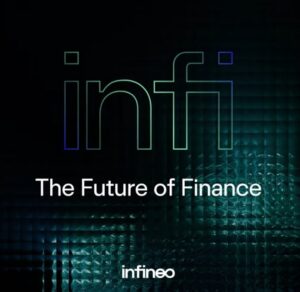
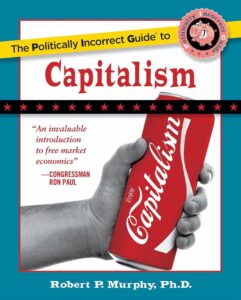
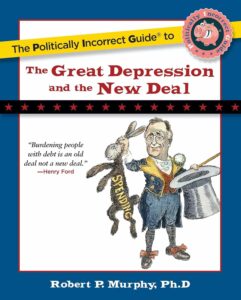
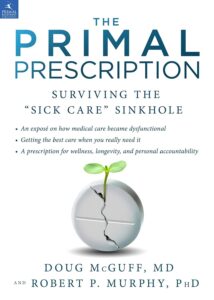

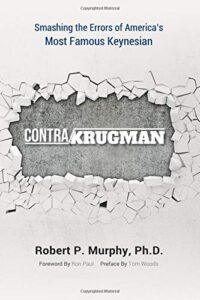
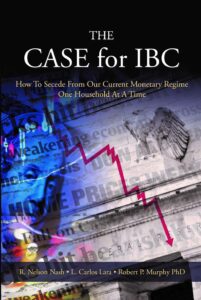
Recent Comments